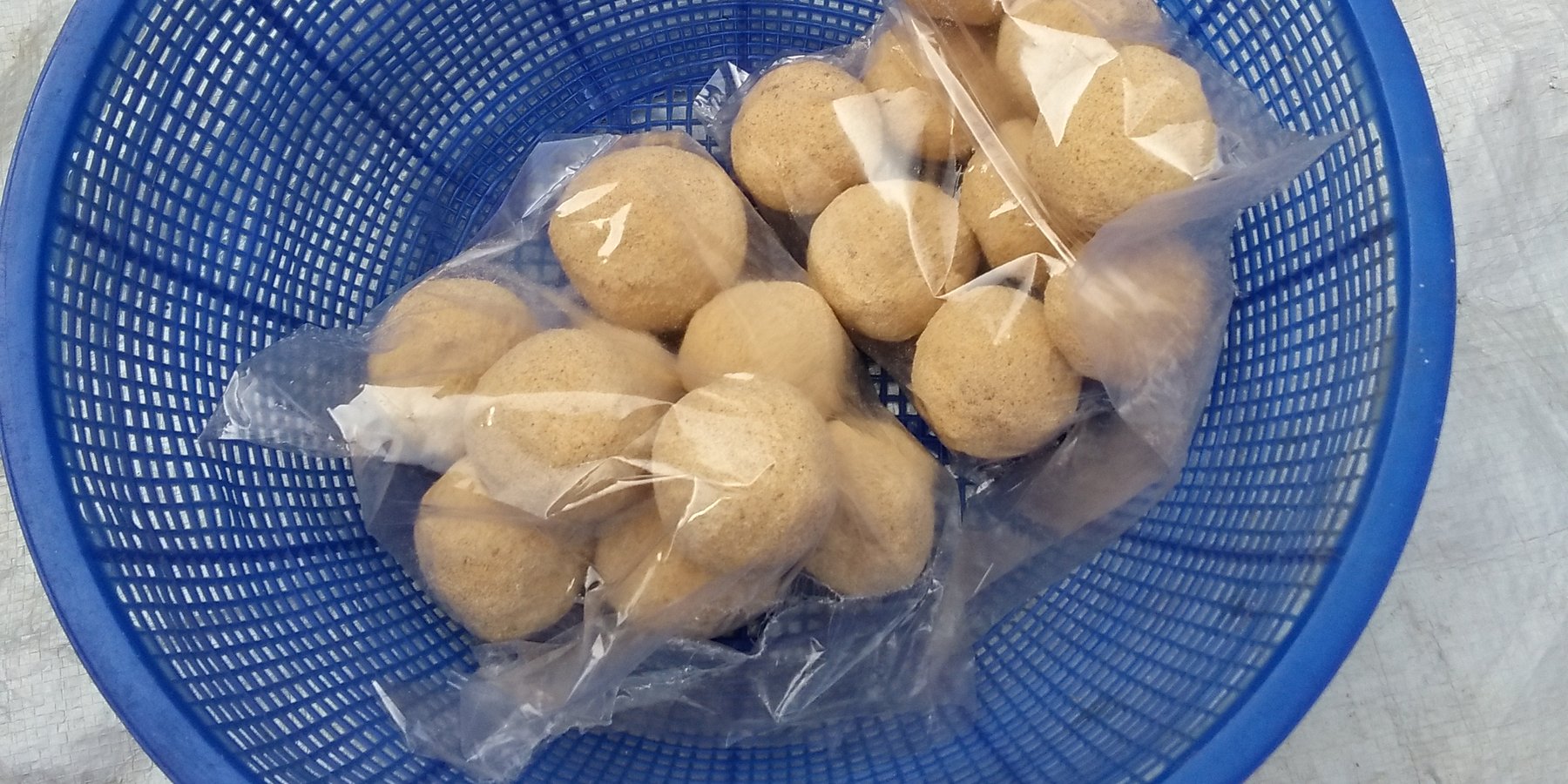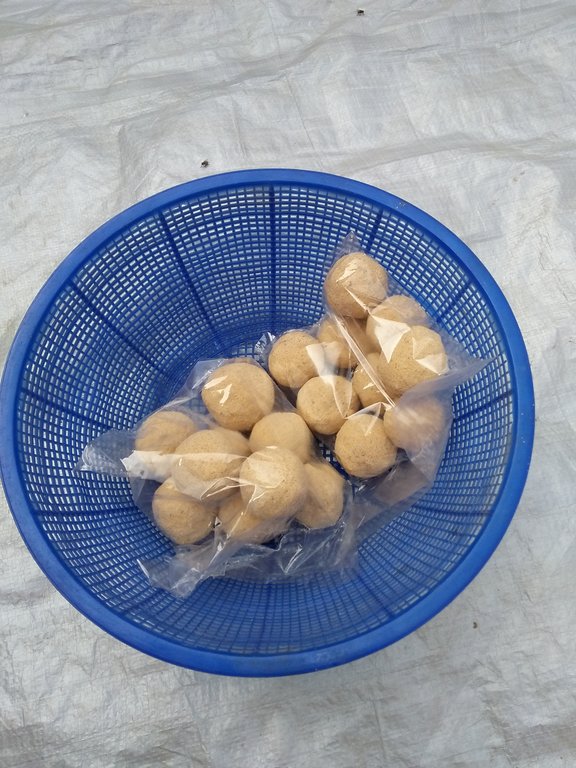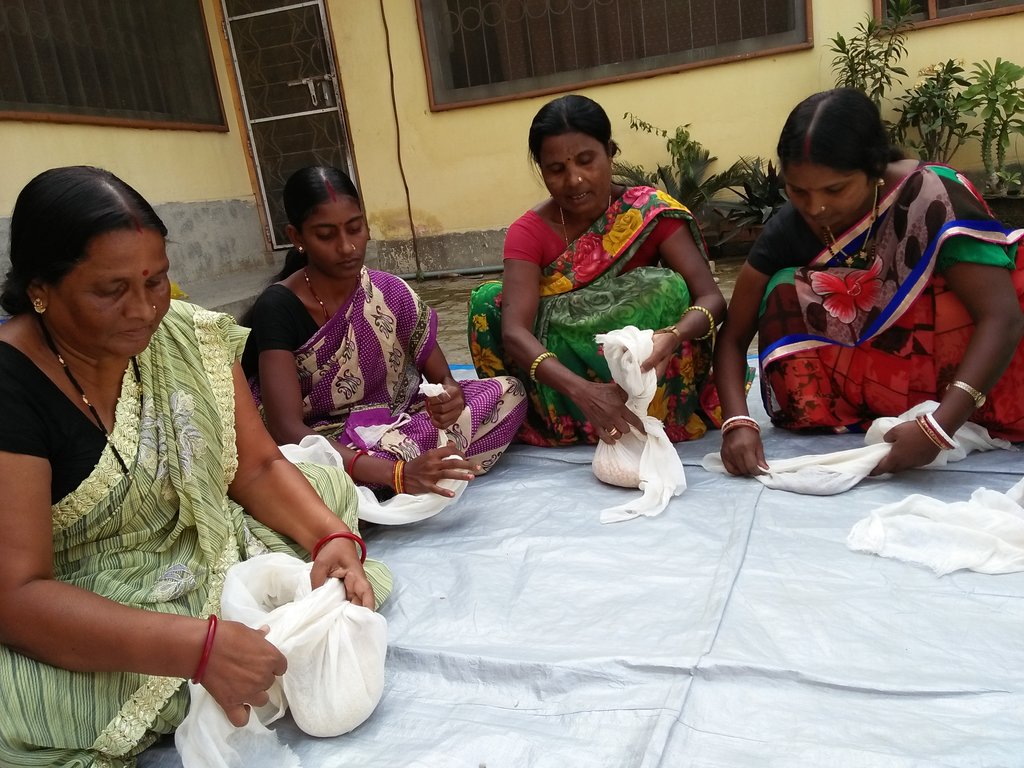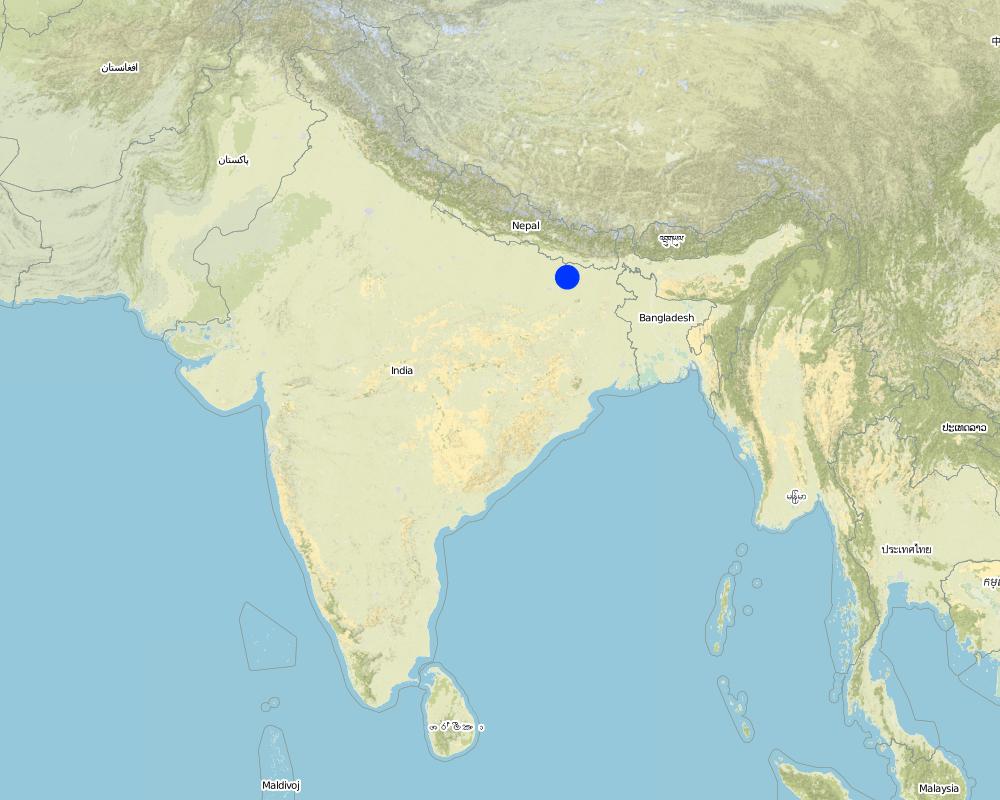Fighting malnutrition by promoting locally produced horlicks (multigrain nutrition balls) [India]
- Creation:
- Update:
- Compiler: MARIA ROSELIN
- Editors: Nicole Stolz, Boris Orlowsky
- Reviewers: Boris Orlowsky, Alexandra Gavilano, Deborah Niggli
Deshi horlicks
approaches_1775 - India
View sections
Expand all Collapse all1. General information
1.2 Contact details of resource persons and institutions involved in the assessment and documentation of the Approach
Name of project which facilitated the documentation/ evaluation of the Approach (if relevant)
Book project: where people and their land are safer - A Compendium of Good Practices in Disaster Risk Reduction (DRR) (where people and their land are safer)Name of the institution(s) which facilitated the documentation/ evaluation of the Approach (if relevant)
CARITAS (Switzerland) - Switzerland1.3 Conditions regarding the use of data documented through WOCAT
When were the data compiled (in the field)?
18/12/2016
The compiler and key resource person(s) accept the conditions regarding the use of data documented through WOCAT:
Yes
1.4 Reference(s) to Questionnaire(s) on SLM Technologies
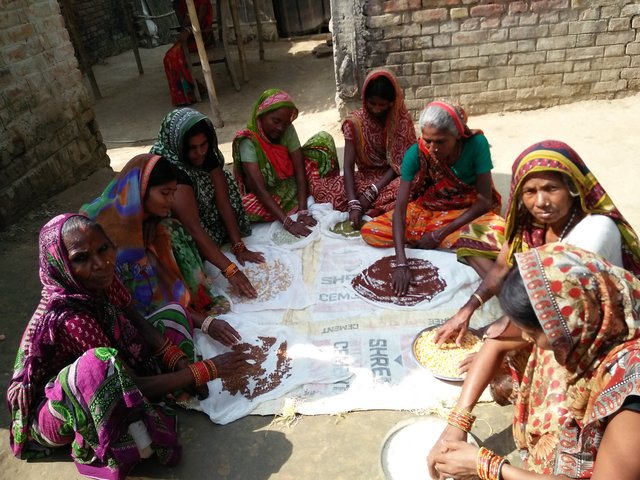
Multigrain Nutrient Ball [India]
Introducing a multigrain flour to prevent malnutrition of rural communities, enhancing community resilience to natural disasters such as floods.
- Compiler: MARIA ROSELIN
2. Description of the SLM Approach
2.1 Short description of the Approach
Multigrain nutritional ball to ght malnutrition and improve the health of rural
communities especially during and after disasters like floods (and droughts).
2.2 Detailed description of the Approach
Detailed description of the Approach:
Multigrain nutrient balls, or energy drinks made from the same ingredients, are
suitable for all age groups. They contain the nutritional elements of carbohydrates,
essential vitamins and minerals. The aim of supplying vulnerable groups with these
supplements is to eradicate malnutrition among children and women, who are
normally more vulnerable physically and prone to particular diseases, especially during
- and following - natural disasters like floods and droughts. Children in rural areas up
to the age of five are often malnourished due to their poor economic status, the lack of
hygiene and malnourished mothers. Women in rural communities are
commonly malnourished due to irregular meals, heavy work loads and early
marriages. People in rural area are busy throughout the day, and as well as not eating
regularly, they don't consume nutritionally balanced meals due to poverty, and
unavailability due to drought of essential vegetables and fruits. Consuming this
this local 'Deshi Horlicks' helps to provide nutritious essentials to those who need it
most. This becomes even more important during and after disasters like floods when
conventional food supply is even more restricted.
When the Community Health Education Development (CHED) programme was carried
out among the rural communities, a survey found many women and children to be
anaemic. The mortality and morbidity rate was high generally, and highest among
women and children. In this situation the local development centre 'Nirmal Mahila
Kalyan Kendre' (NMKK) realised the need to introduce a nutrition programme within
the community. At the time, women were organised into Community Based
Organisations (CBOs). This made the entry point easy. Women were consistently made
aware about the purpose of maintaining health. NMKK took over the training and
capacity building of women regarding this 'Deshi Horlicks' technology, focused in
regular training sessions of midwives and ayurvedic practitioners (vaidhyas), who are
responsible for community health. They, after being trained, implemented this
approach in the community.
This technology was practiced within the community until recently. However with the
arrival in shops of national and international energy drinks, people started dropping
good local practices like these. Women feel that it is too time consuming as they are
continuously busy from early in the morning to late at night. They can also get readymade
branded horlicks powder in the shop. However, even today some of the women
in the target region continue to make Deshi Horlicks. NMKK perseveres to push for the
re-establishment of this good practice in a sustainable manner.
2.3 Photos of the Approach
2.5 Country/ region/ locations where the Approach has been applied
Country:
India
Region/ State/ Province:
BIHAR
Further specification of location:
DARBHANGA
Map
×2.6 Dates of initiation and termination of the Approach
If precise year is not known, indicate approximate date when the Approach was initiated:
10-50 years ago
2.7 Type of Approach
- project/ programme based
2.8 Main aims/ objectives of the Approach
Eradicating malnutrition among women and children in rural areas and prepare for disasters.
2.9 Conditions enabling or hindering implementation of the Technology/ Technologies applied under the Approach
social/ cultural/ religious norms and values
- enabling
They are free to apply this technology in their environment.
availability/ access to financial resources and services
- enabling
If women need to develop this technology at larger scale, they can access banks as well as use benefits from their group savings.
knowledge about SLM, access to technical support
- enabling
They are close to the organization. Persons with technical skills are available and ready to provide support.
markets (to purchase inputs, sell products) and prices
- hindering
In the rural area, people don't understand the richness and value of this multigrain nutrition balls or energy drinks. They go for manufactored products and don't value the local products. This negative attitude towards locally produced food is a hindrance.
workload, availability of manpower
- hindering
Production requires several days, which people are increasingly unwilling to invest
3. Participation and roles of stakeholders involved
3.1 Stakeholders involved in the Approach and their roles
- local land users/ local communities
Local communities
Local communities especially women took part in the training programs and invested a lot.
- community-based organizations
Community based organizations
Self Help Groups and Health Networks which were part of the project activities adopted this technology and implemented it.
- SLM specialists/ agricultural advisers
SLM specialists played the role of collecting the information from the community related to this technology and compilation of the data.
- international organization
CARITAS Switzerland
Financial supported for the training programs.
3.2 Involvement of local land users/ local communities in the different phases of the Approach
| Involvement of local land users/ local communities | Specify who was involved and describe activities | |
|---|---|---|
| initiation/ motivation | interactive | NMKK Organization staff was involved in explaining the approach |
| planning | interactive | NMKK Organization staff was involved in planning with the community |
| implementation | interactive | NMKK staff supported them in implementing the technology |
| monitoring/ evaluation | interactive | NMKK evaluated the activity |
| Training | interactive | NMKK used trained persons to train other community members in implementing this technology |
3.4 Decision-making on the selection of SLM Technology/ Technologies
Specify who decided on the selection of the Technology/ Technologies to be implemented:
- mainly SLM specialists, following consultation with land users
Specify on what basis decisions were made:
- personal experience and opinions (undocumented)
4. Technical support, capacity building, and knowledge management
4.1 Capacity building/ training
Was training provided to land users/ other stakeholders?
Yes
Specify who was trained:
- field staff/ advisers
If relevant, specify gender, age, status, ethnicity, etc.
Women
Form of training:
- demonstration areas
- courses
4.2 Advisory service
Do land users have access to an advisory service?
Yes
Specify whether advisory service is provided:
- at permanent centres
Describe/ comments:
During the village visits
4.3 Institution strengthening (organizational development)
Have institutions been established or strengthened through the Approach?
- yes, a little
Specify the level(s) at which institutions have been strengthened or established:
- regional
Describe institution, roles and responsibilities, members, etc.
Nirmal Mahila Kalyan Kendra is a social development centre working for the social and economic empowerment and sustainable development of the vulnerable sections of the society for more than 20 years.
Specify type of support:
- capacity building/ training
4.4 Monitoring and evaluation
Is monitoring and evaluation part of the Approach?
Yes
Comments:
Health staff monitored the women of the community whether they regularly practice it. They also evaluate intermittently with the women how it helps them in fighting against malnutrition.
If yes, is this documentation intended to be used for monitoring and evaluation?
Yes
4.5 Research
Was research part of the Approach?
Yes
Specify topics:
- sociology
Give further details and indicate who did the research:
On health and nutrition aspects.
5. Financing and external material support
5.1 Annual budget for the SLM component of the Approach
If precise annual budget is not known, indicate range:
- 2,000-10,000
Comments (e.g. main sources of funding/ major donors):
CARITAS Switzerland
5.2 Financial/ material support provided to land users
Did land users receive financial/ material support for implementing the Technology/ Technologies?
No
5.4 Credit
Was credit provided under the Approach for SLM activities?
No
5.5 Other incentives or instruments
Were other incentives or instruments used to promote implementation of SLM Technologies?
No
6. Impact analysis and concluding statements
6.1 Impacts of the Approach
Yes. Greatly .community was quite interested in preparing horlicks flour. Because it helped their children to gain improved health
Did the Approach enable evidence-based decision-making?
- No
- Yes, little
- Yes, moderately
- Yes, greatly
Women found this technology effective when they first applied it. This created interest in them to adopt this technology
Did the Approach help land users to implement and maintain SLM Technologies?
- No
- Yes, little
- Yes, moderately
- Yes, greatly
People were able to implement easily and maintain it to some extent
Did the Approach improve knowledge and capacities of land users to implement SLM?
- No
- Yes, little
- Yes, moderately
- Yes, greatly
Of course this increased their knowledge
Did the Approach empower socially and economically disadvantaged groups?
- No
- Yes, little
- Yes, moderately
- Yes, greatly
Although it did not become an income generating source so far, the health situation of women and children improved.
Did the Approach encourage young people/ the next generation of land users to engage in SLM?
- No
- Yes, little
- Yes, moderately
- Yes, greatly
This approach is applicable at all ages
Did the Approach lead to improved food security/ improved nutrition?
- No
- Yes, little
- Yes, moderately
- Yes, greatly
Community uses the energy drink for all age classes from children to elderly
This approach helps in fight against malnutrition
Did the Approach lead to employment, income opportunities?
- No
- Yes, little
- Yes, moderately
- Yes, greatly
This approach focuses only on improving health of any human being
6.2 Main motivation of land users to implement SLM
- reduced risk of disasters
During the disaster this can be used as a nutritional drink for everyone in the family.
6.3 Sustainability of Approach activities
Can the land users sustain what has been implemented through the Approach (without external support)?
- yes
If yes, describe how:
They need no external support. They know the significance of this technology well. They benefit out of it whenever they feel the need.
6.4 Strengths/ advantages of the Approach
| Strengths/ advantages/ opportunities in the land user’s view |
|---|
|
- Reduction in the malnourished children in the community - Community can improve the health conditions of the members, especially women and children - Constantly using this product will keep them active and healthy |
| Strengths/ advantages/ opportunities in the compiler’s or other key resource person’s view |
|---|
|
- People can get multi nutritional elements especially during disasters (drought and flood) - This good practice is carried on to the other women who are not part of this apparoach |
6.5 Weaknesses/ disadvantages of the Approach and ways of overcoming them
| Weaknesses/ disadvantages/ risks in the land user’s view | How can they be overcome? |
|---|---|
| Arrival of national and international drinks weakened people practicing it regularly | Constant motivation regarding the significance of this approach to the community |
| Weaknesses/ disadvantages/ risks in the compiler’s or other key resource person’s view | How can they be overcome? |
|---|---|
| Decrease in the agricultural productivity, as various disasters such as drought, flood, cold waves or cyclones leave the land unproductive and affect it's fertility as well as the crops. |
7. References and links
7.1 Methods/ sources of information
- interviews with land users
15
- interviews with SLM specialists/ experts
5
Links and modules
Expand all Collapse allLinks

Multigrain Nutrient Ball [India]
Introducing a multigrain flour to prevent malnutrition of rural communities, enhancing community resilience to natural disasters such as floods.
- Compiler: MARIA ROSELIN
Modules
No modules


